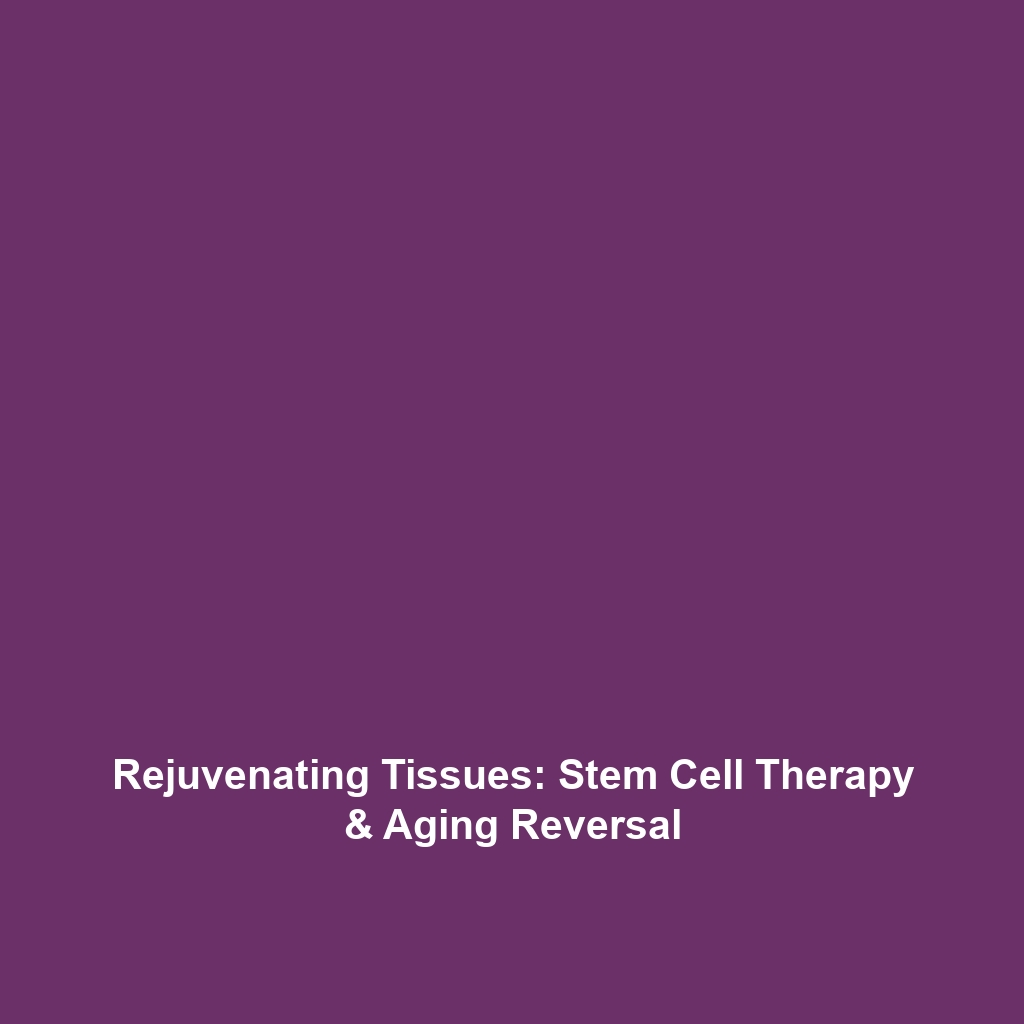Stem Cell Therapy: Replacing Damaged or Aging Cells to Rejuvenate Tissues and Organs
Stem Cell Therapy has emerged as a revolutionary approach in modern medicine, particularly in the fields of Cryonics and Life Extension. By replacing damaged or aging cells with stem cells, this therapy potentially rejuvenates tissues and organs, and offers hope for reversing various aspects of aging. As science continues to unveil the complexities of cellular regeneration, stem cell therapy stands at the forefront of efforts to enhance longevity and improve quality of life, marking a significant advancement in the quest for medical immortality.
Key Concepts of Stem Cell Therapy
At the heart of Stem Cell Therapy is the principle of regeneration. Here are the major concepts associated with this innovative treatment:
- Stem Cell Types: Stem cells can be categorized into embryonic stem cells and adult stem cells, each playing unique roles in cellular repair.
- Mechanism of Action: Stem cells harness their ability to differentiate into various cell types, facilitating the regeneration of damaged tissues.
- Rejuvenation Potential: The therapy aims to replace senescent or dysfunctional cells, thereby rejuvenating organs and tissues affected by aging and disease.
Understanding these concepts is essential for comprehending how Stem Cell Therapy intertwines with the broader framework of Cryonics and Life Extension.
Applications and Real-World Uses
The practical applications of Stem Cell Therapy in Cryonics and Life Extension are gaining traction:
- Regenerative Medicine: replacing damaged heart tissues in patients with cardiovascular diseases.
- Neurological Repair: restoring function in neurodegenerative disorders, including Parkinson’s disease.
- Orthopedic Applications: repairing cartilage and other joint tissues, enhancing mobility in aging populations.
These applications highlight how Stem Cell Therapy is used in Cryonics and Life Extension, effectively revitalizing individuals and improving their lifespan.
Current Challenges of Stem Cell Therapy
While the prospects of Stem Cell Therapy are promising, several challenges and limitations persist:
- Ethical Concerns: The use of embryonic stem cells raises significant ethical questions.
- Regulatory Hurdles: Strict regulations surrounding stem cell research can hinder progress.
- Rejection and Compatibility: The body may reject transplanted stem cells, leading to complications.
This outline of the challenges of Stem Cell Therapy shows the issues that must be resolved within the realm of Cryonics and Life Extension.
Future Research and Innovations
The future of Stem Cell Therapy is bright, with numerous innovations on the horizon:
- Gene Editing Technologies: Techniques like CRISPR are potential tools for enhancing stem cell capabilities.
- Personalized Medicine: Tailoring stem cell treatments to the genetic profiles of individuals could maximize effectiveness.
- Bioengineering Advances: Developing lab-grown organs using stem cells might revolutionize transplantation and rejuvenation strategies.
These breakthroughs will play a pivotal role in refining Stem Cell Therapy and its integration into Cryonics and Life Extension.
Conclusion
In summary, Stem Cell Therapy offers transformative potential for replacing damaged or aging cells, thereby rejuvenating tissues and organs. As we explore its relevance to Cryonics and Life Extension, it becomes clear that ongoing research and ethical considerations will shape the future landscape of this promising field. For those interested in exploring more about the intersection of regenerative medicine and longevity, we recommend checking out our resources on Cryonics and Life Extension.

Leave a Reply